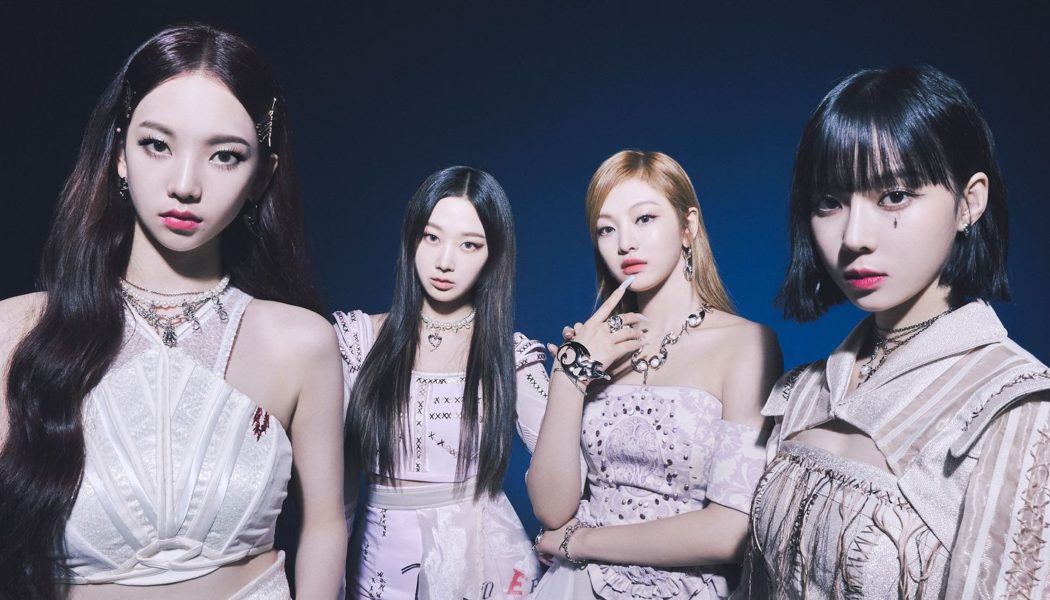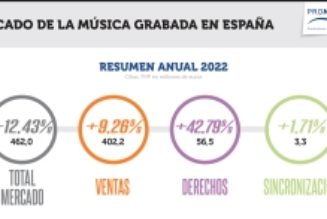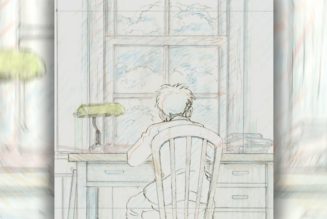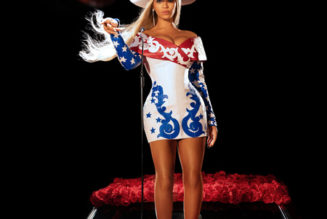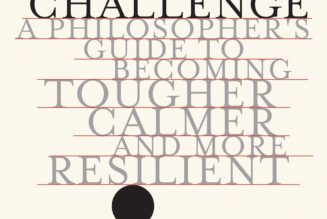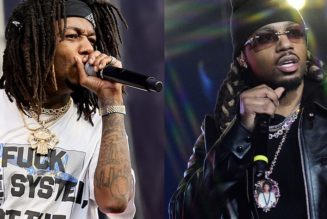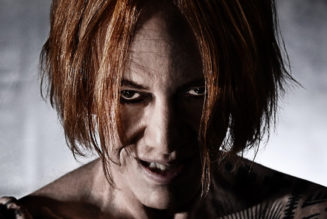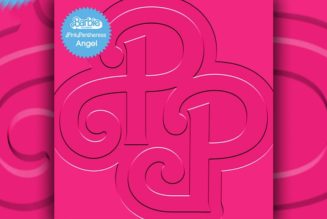
By Regina Kim
At first glance, the futuristic music video for the South Korean foursome Aespa’s (styled all lowercase) breakout single “Black Mamba” may not seem that different from other K-pop visuals, with dynamic shots of explosive choreography and brightly colored costumes set against even brighter backgrounds. But about two-and-a-half minutes in, something shifts. As a girl stares wistfully at her reflection in a subway window, the reflection gazing back is not quite human. With cartoon eyes and long purple hair, she’s an animated doppelgänger, stretching her hand toward her human counterpart.
With the release of this futuristic clip in November 2020, the girl group broke the record for the fastest debut track by any K-pop outfit to surpass 100 million views on YouTube, a feat that was achieved in a mere 51 days. It was a remarkable milestone for the “monster rookie group” that had only broken onto the scene one month prior in a series of tantalizing teasers. Aespa followed up this debut song with the releases of the heartwarming ballad “Forever,” the ultra-catchy hip-hop dance tune “Next Level,” and earlier this week, the mini-album, Savage. But “Black Mamba” also had far-reaching implications for the industry: the surreal music video, with its hybrid visuals, laid the foundation for a new form of pop-music storytelling, one where the line between reality and science fiction is blurry at best.
Comprised of Giselle, Winter, Karina, and Ningning, Aespa is the first group to be presented as part of the SM Culture Universe (SMCU), a fictional realm created in October 2020 by the agency SM Entertainment, which also represents top bands like EXO and Red Velvet, as a way to connect its artists under a unified storyline. The ambitious initiative is akin to the Marvel Cinematic Universe, which links the various superheroes and villains that fall under its umbrella, and Aespa is at the forefront of this effort. SM chairman Soo-man Lee said the group will “reflect a future world centered on celebrities and avatars” and represent a “completely new and innovative group that transcends the boundaries between the real world and the virtual world.”
As the vanguard of SM Entertainment’s intricate metaverse, Aespa takes storytelling to the next level with its novel AI concept. The band’s name is derived from a combination of the words “avatar,” “experience,” and “aspect.” The first two refer to “finding another self and experiencing a new world,” Giselle tells MTV News, while the latter represents the duality of real and virtual inherent to the group’s mythology. Each member has an alter-ego called “ae” (pronounced like “eye”), lifelike avatars that exist in a virtual realm called “Flat” and connect with their idol opposites through a portal known as the “Port of Soul.” Although each ae is designed to resemble a group member — with similar facial features and a corresponding cyberpunk ensemble — these are separate entities with their own free will. “SM already had these ideas from the start, but we are the first ones to actually be able to show our avatar members,” Giselle explains.
It’s all quite heady, and yet Aespa’s debut mini-album Savage provides a sonic backdrop that exists outside this imagined world — blending dance and pop with elements of house, trap, rap, and other genres — while also giving listeners glimpses into an overarching fable. The album’s opening track “Aenergy,” for example, introduces the members and their unique powers as they set out to save the avatars from Black Mamba, the giant, serpent-like monster who appears in the group’s debut music video. In the SMCU lore, Black Mamba resides in a lawless, limitless space beyond worlds called “Kwangya,” which translates to “wilderness” in English. Kwangya has also been referenced in the music videos of other SM artists, as in EXO’s “Don’t Fight the Feeling,” where one member, Kai, mentions traversing it in a spaceship.
“I think the biggest quality that sets us apart is the fact that all of our songs are linked together, so it’s like watching a film series,” Karina says. “The song ‘Savage’ has our whole story about our fight with Black Mamba,” Giselle adds. In the visual for the clanging hyperpop-tinged title track, the girls team up to strike down a reptile with translucent scales before breaking it down alongside their ae friends.
Other songs, however, were created simply to communicate messages of hope and encouragement to Aespa’s fans, lovingly known as “My,” and who Karina says are “like my best friends.” There’s “I’ll Make You Cry,” a fierce revenge anthem for betrayed lovers, and the bubbly “Yeppi Yeppi,” a dance cut about embracing one’s own beauty. “When we recorded the track ‘Yeppi Yeppi,’ we put a lot of energy into it, and I think it resulted in a very fun and upbeat song,” Karina says. “I hope that listeners will find comfort in our music and that our songs will cheer them up when they’re going through a hard time.” With a smile, Ningning adds, “And if you look closely at the lyrics, you’ll find a story there, too.”
The making of Savage also marked the first time all the Aespa girls recorded together in a studio, a process that turned out to be a lot of fun for the members, who are all close friends. “We had a great time recording the album, and the four of us got to try genres that we didn’t do before,” Ningning says. In the workroom, they were able to fully harness their unique synergy as a group — a factor Winter says has greatly contributed to their initial success — which is apparent in their smooth vocal harmonies and mesmerizing choreography. “We have no secrets, and we share everything with each other,” Karina notes. “So we’re a lot more like family than people might think.”
While other industries have turned holograms into pop stars and avatars into social media influencers, Aespa is the first K-pop act to include both human and AI members. The group’s concerts often feature the quartet interacting with their digital counterparts onstage. In their debut performance of “Black Mamba,” the girls and the ae can be seen observing each other through a mirror, and during one rendition of “Next Level,” they even trade places for a brief moment. Together, the group heralds the beginning of what seems to be a virtual age for K-pop and perhaps the next chapter in musical storytelling worldwide. Lee once declared that he was “one step closer” to fulfilling his vision for “the entertainment world of the future.” And as Aespa continues to open our eyes to the possibilities that exist at the intersection of music and technology, that day looks increasingly bright.
